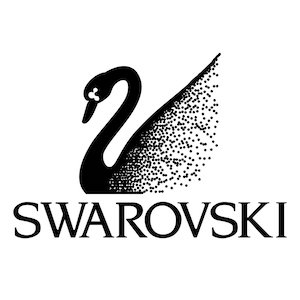
It was a strange fact about Swarovski: For years, one of the world’s biggest jewelry brands had no chief executive officer.
Until recently, the 125-year-old company was governed by an executive board consisting of four fifth-generation descendants of founder Daniel Swarovski, all of whom ran different aspects of the business, often working from different locations. The executive board answers to a family-dominated board of directors, as well as a several dozen family shareholders.
“It’s hard to say who’s the boss at Swarovski,” The New York Times concluded in 2005, when the executive board comprised eight people.
Last week, the company decided to say who’s boss. As part of an overall reorganization, the crystal maker named executive board chairman Robert Buchbauer CEO. (One shareholder tells JCK that Buchbauer’s appointment is only interim; a company spokesperson responded, “That is not the case.”)
In a statement, Swarovski said that Buchbauer intends to “realign the company along a common vision, growth strategy, and organization.”
That would mark a significant change for a company that struck one ex-employee as “siloed,” the result of its fragmented management structure.
“A lot of times our division would have no indication of what the other divisions were doing,” this person added. “We’d read something, and say, ‘They’re doing that?’”
Another former employee said, “I’ve never worked at a place with as weird a corporate structure as Swarovski.
“It was not aligned. The family all had different ideas of where they wanted the company to go. It was like you were working for several different companies. The gemstone division would compete against crystal division. Another division was making branded jewelry for Swarovski’s competitors. The company was constantly competing against itself.”
Even upper management admitted that the setup sometimes hampered decision-making.
“[W]e have to make sure that when we go ahead with a project, it has everyone’s support,” executive board member Nadja Swarovski told WWD in 2015. “We have to make sure we convince each other. The development would be much faster if there were a CEO, but then the question is, who is it going to be? Would it be a person with more shares or more experience or more success? We all have a different sense of entitlement.”
That structure would be challenging in normal circumstances, but it’s worse when there’s reported “tension” among the executive board.
“It was common knowledge that family politics were dominating the board for years,” said one longtime observer, “and were something of a distraction for the business.”
Along with the CEO appointment, WWD reported that Markus Langes-Swarovski had stepped down as head of its wholesale division and a member of the executive board, though he will join its advisory board and chair its board of directors.
The reorganization has also seemed to sideline Nadja Swarovski, by far the best-known company exec. According to WWD, she is no longer in charge of branding, communications, or the Atelier Swarovski brand (which she founded)—though she still runs Swarovski’s sustainability efforts and its charitable foundation. Both Nadja Swarovski and the company declined comment on that, except to note that she remains a member of the now-three-person executive board.
The Atelier label has garnered a high profile and forged strong ties in the fashion world, with its founder Nadja sometimes receiving as much publicity as the brand. The Financial Times dubbed her the “crystal godmother of fashion—sprinkling Swarovski fairy dust and dollars over key fashion week designers and events.” She has won a shelfful of awards and has her own Wikipedia page. (The new CEO does not.)
The ex-employee said that, inside the company, “Nadja was something of a lightning rod. [Atelier] was a small part of the business that received the lion’s share of the publicity.
“She wanted to take it in a direction that’s very different than the traditional brand. She wanted it to be synonymous with high fashion and luxury. But that’s not who the customer is. The traditional Swarovski customer is a middle-class customer who doesn’t care who these designers are.”
Nadja Swarovski tells JCK via email: “At the company, I’ve built Swarovski Group into a global brand extending far beyond what it was when I arrived. I’m especially proud of Atelier Swarovski’s progress, which continues to surpass expectations in market penetration, sustainability, and overall success. The partnerships we forge with incredible designers and artists play a big role in that, as do the contributions we make in fashion, jewelry, architecture, entertainment, and both sustainability and women’s equality.”
Those who admire Nadja say she has worked tirelessly to promote the company, and her efforts have paid off with an overall halo effect for Swarovski that can’t be quantified. They say her high profile added personality and glamour to the brand.
But glamour doesn’t come cheap. And even before the recent reshuffle, there was a sign that Swarovski was cutting back its fashion ties: Last year, it ended its 17-year sponsorship of the CFDA Awards.
The company’s core business remains Daniel Swarovski’s crystals—which are produced with a “secret formula,” as guarded as the recipe for Coca-Cola.
Yet, even Coke—as solid a brand as ever was—has had trouble connecting in the current market. Atelier Swarovski was a concerted attempt to attract a different type of consumer. What will happen to that effort now? Swarovski isn’t saying—and the outlook isn’t crystal clear.
(Image courtesy of Queensgate Shopping Centre, U.K.)
Follow JCK on Instagram: @jckmagazineFollow JCK on Twitter: @jckmagazine
Follow JCK on Facebook: @jckmagazine